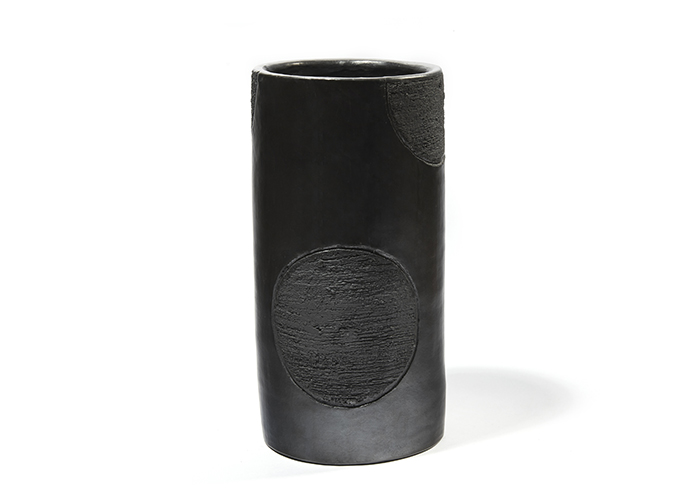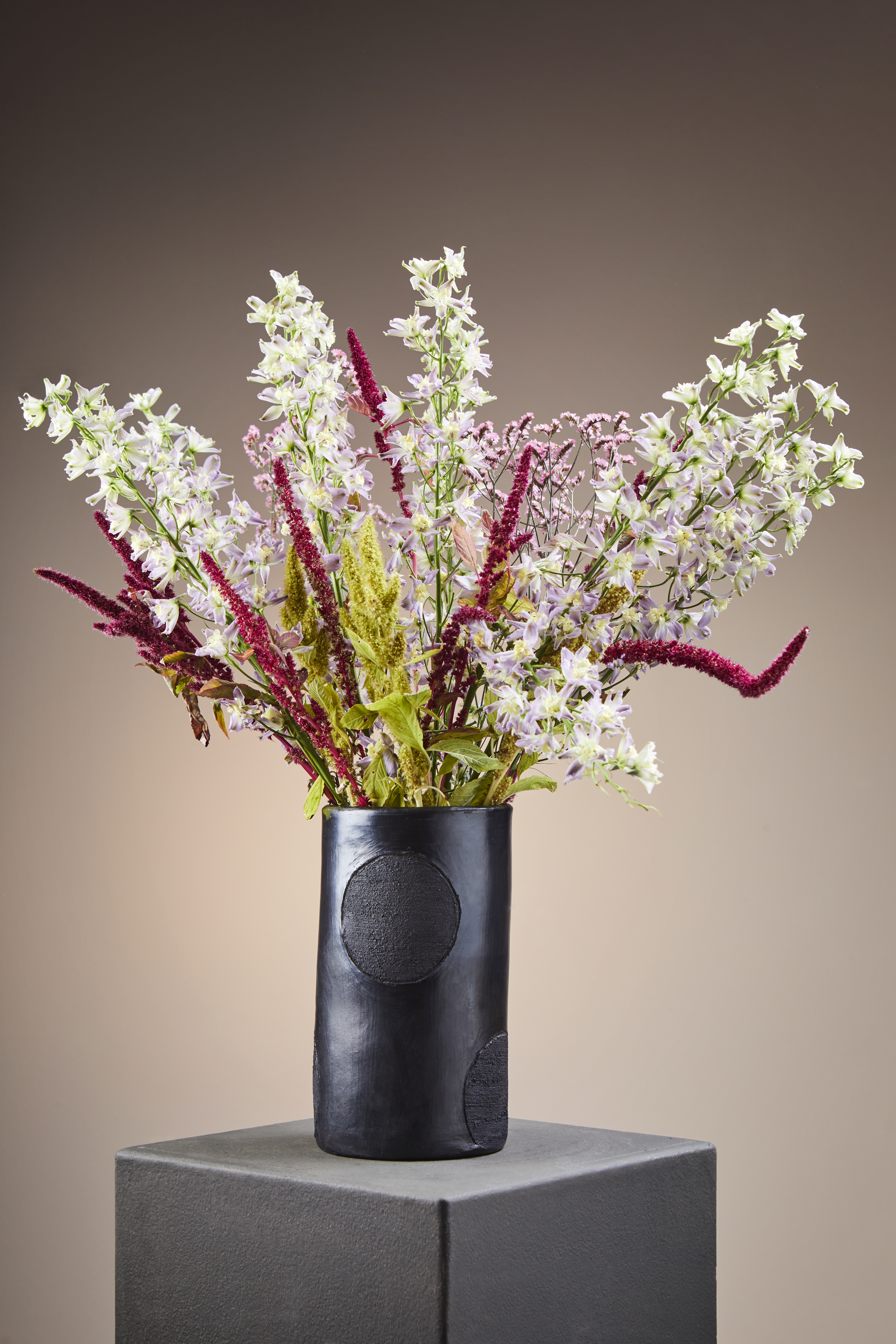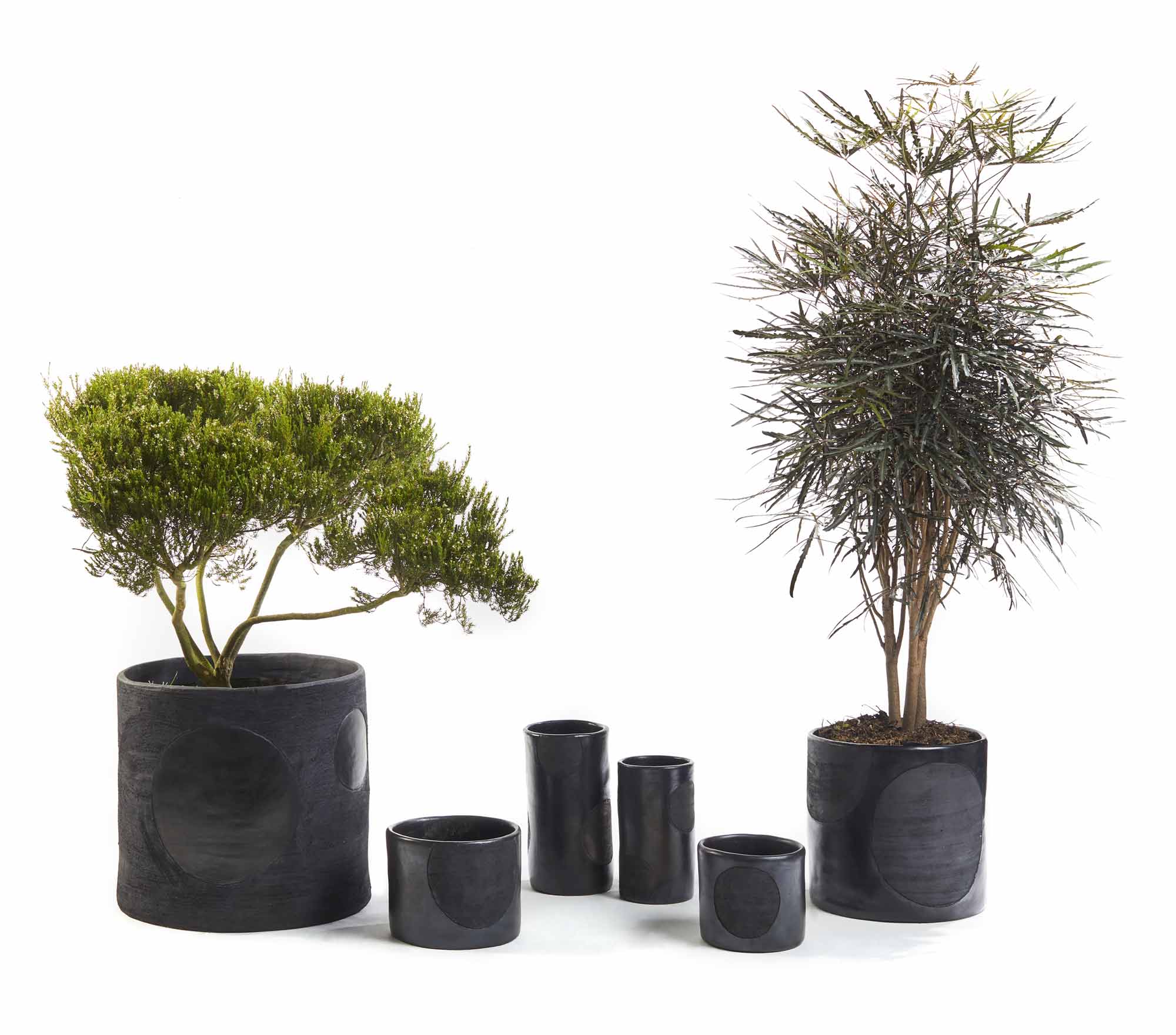Loza is a new collection of bold, minimalist ceramics designed by Sebastian Herkner. Made using the finest traditional Colombian pottery crafts, this series introduces a new side to the ames accessories collection: the design of the vases is crisp and clean with only a textured detail contrasting the smooth finish. By opting for a simple, cylindrical shape, the captivating effect of the black ceramic takes centre stage. ‘All Loza objects catch your eye with their subtle shimmer, but one, organically shaped and brushed area brings in an intriguing contrast,’ says Sebastian Herkner. ‘This creates an exciting play between light and shadow, bringing out more depth and vibrancy in the material.’ The Loza series includes two vases and four planters.
For the Loza vases and planters, ames collaborates with two family-owned businesses based in Tolima, a province that’s been a centre for pottery making and ceramic production for over 300 years. Their workshops employ members of more than 70 families, of which many have become specialists for specific production steps – from clay digging to kiln firing to polishing. Making each Loza piece takes weeks, as every step of the process is done manually – our artisans don’t even use moulds or pottery wheels. It all starts with the raw material: black clay. This clay type is typical for the Tolima region, where it’s dug out of the ground next to the banks of the Magdalena river with spades. It’s then mixed with water to create the mixture which the artisans shape with their hands into the cylindrical shape. As the Loza design is so symmetrical, this step requires absolute precision – only the most experienced makers can make these pieces. To create the textured decoration, the craftspeople use a brush-like tool, scratching the surface with an aluminium wire-wool to create the desired effect as contrast to the otherwise smooth, slightly shimmering surface of the piece. Between each step, the clay needs to dry for multiple days in the sun at a certain temperature as there are no drying rooms with air conditioning in these traditional workshops to speed up the process. If the weather suddenly changes, a whole batch of unfinished works can be ruined. Once they are completely dry, the vases and planter are put into a wood-fired kiln. When they come out, the textured part of these pieces looks like the vase would reveal its inner structure. In the last step, the artisans polish the smooth areas of every item with semi-precious stones to give them a subtle shine.
German designer Sebastian Herkner is a long-term collaborator of ames and has visited Colombia multiple times to experience the country’s cities, nature and people first hand. He also visited many of the ateliers that ames has partnered with to learn about the unique traditional crafts of Colombia's regions. A sought-after contemporary designer and recipient of many industry awards, he has worked with many international design brands, creating intriguing pieces that showcase his intuition for interesting material, colour and texture combinations.







